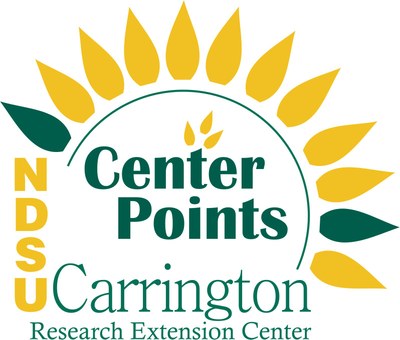Plant Pathology
Research Update
Improving the management of Fusarium and Aphanomyces root rot in field peas
Part 1 - Impact of crop rotation on root rot severity and field pea agronomic performance: key findings (user-friendly report)
Optimizing fungicide spray droplet size for improved management of white mold in soybeans and dry beans and Ascochyta blight in chickpeas – Slides illustrating key results.
Improving the management of Ascochyta blight in chickpeas (research update; March 27, 2020).
Part 1 - Comparative fungicide efficacy, fungicides with DMI (FRAC 3) or SDHI (FRAC 7) mode of action
Part 2 - Comparative fungicide efficacy, premix fungicides and other modes of action
Part 3 - Comparative fungicide efficacy, fungicide tank-mixes with Bravo WeatherStik (chlorothalonil) – Slides illustrating key results , Detailed report
Part 4 - Optimizing fungicide spray droplet size for improved management of Ascochyta blight of chickpeas (updated March 10, 2021) – Slides illustrating key results
Part 5 - Optimizing fungicide spray volume for improved management of Ascochyta blight of chickpeas – Slides illustrating key results , Detailed report
Improving the management of Sclerotinia head rot of sunflowers; slides accompanying on online meeting organized by SDSU, March 17, 2020:
Part 1 – Susceptibility to head rot relative to sunflower growth stage
Part 2 – Prospects for managing head rot in sunflowers with partially resistant hybrids
Part 3 – Prospects for managing head rot in sunflowers with fungicides
Improving the management of white mold in soybeans: presentations given in Mankato, MN and Brookings, SD; Feb. 25-26, 2020:
Part 1 – Optimizing fungicide application timing
Part 2 – Optimizing fungicide application frequency relative to soybean maturity
Part 3 – Optimizing fungicide spray droplet size
Part 4 – Fungicide efficacy and prospects for using drop nozzles
Improving the management of white mold in dry edible beans – presentations given in Grand Forks, ND; Feb. 19, 2020:
Part 1 – Optimizing fungicide application timing
Part 2 – Optimizing fungicide spray droplet size
Row Crop Tour, NDSU Carrington Research Extension Center; August 29, 2019
Improving the management of white mold in soybeans and dry beans: Frankenmuth, MI and Shipshewana, IN; March 5-6, 2019
Part 1 – Evaluating risk of white mold on the basis of environmental conditions
Part 2 – Impact of row spacing on the agronomic performance of soybeans and pinto beans under white mold pressure
Part 3 – Impact of seeding rate on the agronomic performance of soybeans under white mold pressure
Part 4 – Optimizing fungicide application timing for improved management of white mold in soybeans and dry beans
Part 5 – Optimizing fungicide application methods for improved management of white mold in soybeans and dry beans
Part 6 – Impact of fungicide application rate and application frequency; response to fungicides relative to the growth stage at which conditions favor white mold
Presentation give at the NDSU Advanced Crop Advisors Workshop (Feb. 13, 2019)
Presentation given at the MonDak Pulse Day (Feb. 7, 2019)
part 1: Managing QoI-resistant Ascochtya blight with fungicides in chickpeas and field peas
part 2: Managing Fusarium and Aphanomyces root rots in field peas with crop rotation and planting date
Management of Pythium, Rhizoctonia, Aphanomyces and Fusarium root rots in peas, lentils, and chickpeas - Montana Agri-Business Association annual meeting, Great Falls, MT (Jan. 23, 2019)
part 1: Pythium and Rhizoctonia
part 2: Aphanomyces
part 3: Fusarium
Management of Ascochyta blight in chickpeas and field peas – how the disease is introduced to fields and fungicide efficacy; Montana Agri-Business Association annual meeting, Great Falls, MT (Jan. 24, 2019)
part 1: How the Disease is Introduced to Fields
part 2: Fungicide Efficacy
Research update – optimizing fungicide application methods for improved management of white mold in dry edible beans; Bean Day, an annual meeting organized by the Northarvest Bean Growers Association (Jan. 18, 2019)
Optimizing the agronomic performance of chickpeas under disease pressure -- presentation to the Western Crop and Pest Management School (March 7, 2018).
Fungicide efficacy and application timing for management of white mold in dry edible beans – expanded version (with additional data) of talk given at the Northarvest Bean Growers Association Bean Day in Fargo (Jan. 19, 2018).
Management of diseases of peas, lentils and chickpeas – Diseases of seeds, seedlings, and roots given at the Montana State University Crop & Pest Management School (Jan. 2, 2018)
part 1: Pythium
part 2: Rhizoctonia
part 3: Fusarium root rot
part 4: Aphanomyces root rot
Management of foliar diseases of lentils, chickpeas, and field peas given at the Montana State University Crop & Pest Management School (Jan. 3, 2018)
part 1: Causes of Ascochyta disease outbreaks
part 2: Fungicide efficacy - management of Ascochyta blight
part 3: Management of bacterial blight and powdery mildew in field peas
part 4: Management of anthracnose and white mold in lentils
Program staff include Dr. Michael Wunsch, the program leader; Suanne Kallis, research specialist; Billy Kraft and Steve Shaubert, research technicians; and a large team of seasonal high school and college students.
Inquiries and questions should be directed to Michael Wunsch at 701-652-2951 or michael.wunsch@ndsu.edu


